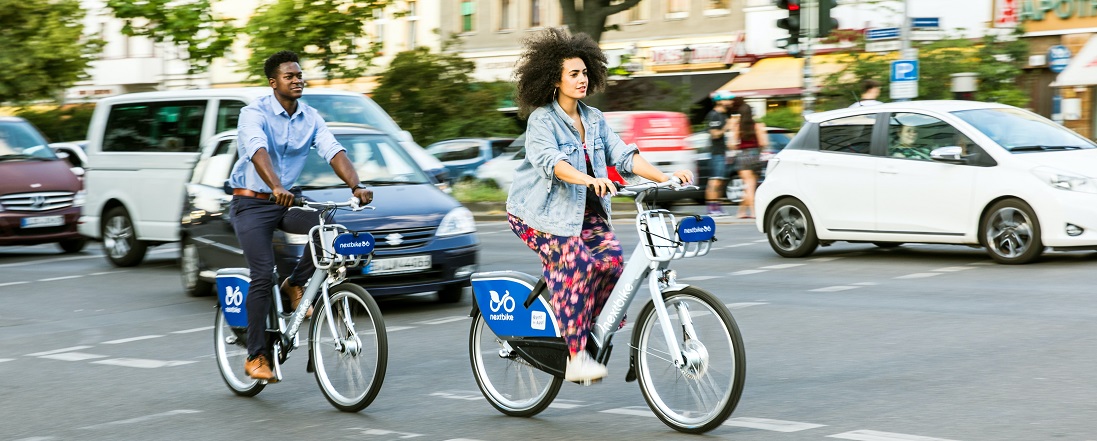
Study: Health Benefits of Strategies for Carbon Mitigation in US Transportation, 2017‒2050
- Linda Rudolph, MD, MPH
- Neil Maizlish, Chengsheng Jiang
-
Focus Areas
Environmental Health, Healthy Communities -
Issues
Climate Change -
Expertise
Research – Quantitative -
Programs
Center for Climate Change and Health

A study from PHI’s Dr. Linda Rudolph and partners compares the health benefits of active transportation (such as walking and biking) and use of electric cars as strategies to decarbonize the transportation sector. In 2050—the target year for carbon neutrality—active travel could avoid 167,000 deaths and gain 2.5 million disability-adjusted life years, monetized at $1.6 trillion. Use of electric cars was found to avoid 1,400 deaths and gain 16,400 disability-adjusted life years, monetized at $13 billion.
The research, published in the American Journal of Public Health, is believed to be the first U.S. national estimate that integrates physical activity from active transport, air pollution reduction from tailpipe emissions, and road traffic injuries.
See the study
Objectives
To quantify health benefits and carbon emissions of 2 transportation scenarios that contrast optimum levels of physical activity from active travel and minimal air pollution from electric cars.
Methods
We used data on burden of disease, travel, and vehicle emissions in the US population and a health impact model to assess health benefits and harms of physical activity from transportation-related walking and cycling, fine particulate pollution from car emissions, and road traffic injuries. We compared baseline travel with walking and cycling a median of 150 weekly minutes for physical activity, and with electric cars that minimized carbon pollution and fine particulates.
Results
In 2050, the target year for carbon neutrality, the active travel scenario avoided 167 000 deaths and gained 2.5 million disability-adjusted life years, monetized at $1.6 trillion using the value of a statistical life. Carbon emissions were reduced by 24% from baseline. Electric cars avoided 1400 deaths and gained 16 400 disability-adjusted life years, monetized at $13 billion.
Conclusions
To achieve carbon neutrality in transportation and maximize health benefits, active travel should have a prominent role along with electric vehicles in national blueprints.
“Although we presented the scenarios as contrasting visions, together they maximize carbon reductions and health benefits. To succeed together, policies and plans must substantially increase options to allow people to choose active transportation. This means the level of service to reach a wide array of destinations by walking, cycling, transit, and driving an electric car must be comparably time-efficient, affordable, and convenient.”
Additional Contributors
- Neil Maizlish
- Linda Rudolph
- Chengsheng Jiang
Work With Us
You change the world. We do the rest. Explore fiscal sponsorship at PHI.
Support Us
Together, we can accelerate our response to public health’s most critical issues.
Find Employment
Begin your career at the Public Health Institute.


